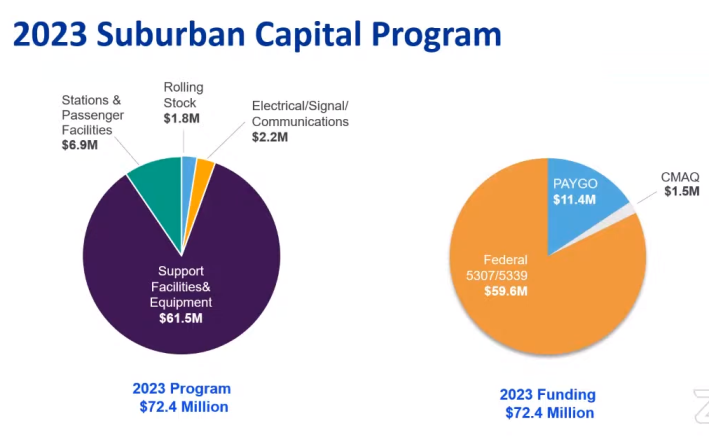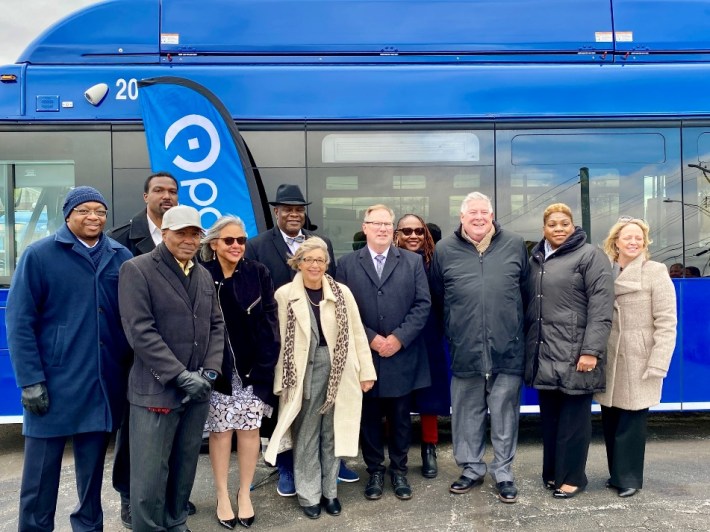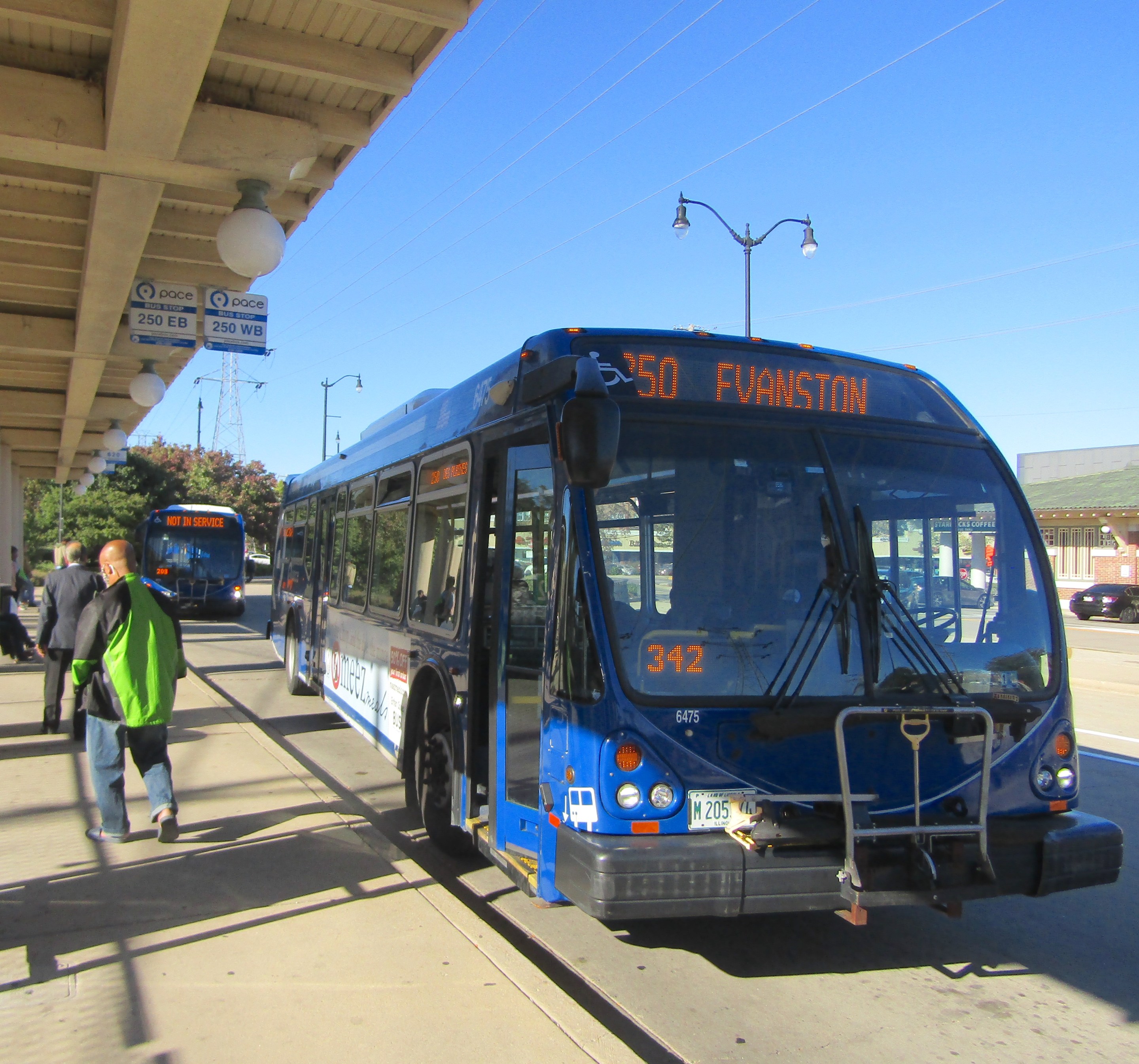Pace’s proposed 2023 budget calls for doing away with transfer fares for regular routes, making all current CTA-only passes valid on Pace, and pulling the plug on the routes that have been officially suspended since COVID-19 hit Chicagoland in spring 2020.
Pace transfers currently work the same way as the CTA’s. Each rider gets one paid transfer (in Pace’s case, 30 cents when transferring to a regular route and $2.80 when transferring to a premium route) and one free transfer within exactly two hours of the original fare payment. Pace is proposing making transfers between regular routes free, while lowering the cost of premium routes transfers to $2.50. The transfer between the CTA and Pace would remain the same, $0.25 for the first transfer, with second transfer free.
The budget also calls for making the currently CTA-only 1-day and 3-day passes valid on Pace, doing away with the CTA-only version of the 7-Day pass and keeping the CTA/Pace version of the 7-Day pass, which would now cost the same as the CTA-only version, saving its users $5. This would bring back the arrangement the two systems used to have in the 2000s, before Pace stopped accepting CTA passes in January 2009.
Pace is also proposing to permanently cancel 69 routes that have essentially been in limbo since the pandemic started. At the time, the transit agency suspended 75 routes and reduced service on 25 more. Throughout the summer of 2021, Pace brought back six routes and restored service cuts to another five, but the rest of the suspensions and service reductions remained “suspended.” The budget would officially eliminate the 69 routes and make the service reductions permanent.
For the most part, the cuts would fall on workplace commuter and Metra line feeder routes, but a few of those routes provided regular service. However, Pace officials emphasized that Pace may end up serving the same areas some other way, even if not necessarily using the traditional fixed routes, as the transit agency looks to revamp the system to match post-pandemic ridership patterns.
Beyond that, the budget focuses on continuing major projects, including early work toward rebuilding the downtown Harvey commuter terminal and major paratransit facilities in Calumet City and Schaumburg. Notably, Pace wouldn’t be buying any electric buses this year, but it will continue working on making the North Division garage, which serves Waukegan and the surrounding suburbs, ready for the electric buses’ arrival.
Fare changes
The proposed transfer changes would bring regular routes in line with local routes, Pace’s term for routes that fall within the city boundaries of Aurora, Elgin, Joliet and Waukegan. Transfers onto those routes have been free for decades.
The premium routes are the bus-on-shoulder lines that use the shoulder of the Stevenson Expressway, as well as express routes to stadiums and Six Flags Great America. The premium transfers fares apply to anyone transferring from regular to premium routes (but, notably, not vice-versa.) The smaller premium transfer of $2.25 is charged when someone used a non-premium pass on a premium route – that would be reduced to $1.10.
At the start of COVID, Pace made the Taxi Access Program, which subsidizes the cost of taxi trips for paratransit-eligible riders, free to riders. The budget proposes bringing the rider fare back, but it would be $2.00 instead of the pre-pandemic $3.00.
During the September 21 budget presentation to the Pace board, head budget analyst Melanie Castle said changes to the passes would give customers “additional flexibility and affordability,” adding that the 3-day passes are ideal for use over the weekend, or during shorter work weeks.
Pace board chair Richard Kwasneski said he supported those changes because he believes that they would help bring back more riders. “One of the things we’re trying to do is really build back ridership, which is going to be totally different than what we had before, and I applaud staff for working, especially along with the CTA, because there are a lot of connection points where, frankly, we could feed off each other. So the ultimate goal from all of this – correct me if I'm wrong – is really to build the ridership back, so that when the pandemic [stimulus] dollars run out, we're able to have ridership back nearing where we were before.”
Route Discontinuations
For the most part, the suspended routes were geared toward 9-5 weekday commuters. That includes feeder service to Metra lines (which saw consistent ridership declines even before the pandemic), suburb-to-suburb reverse commuter expresses, and reverse commuting shuttles. The Shuttle Bug routes, which picked up reverse-commuters from Metra stations and delivered them to suburban offices, would be cut for good. Pace is currently piloting Van Go vanpool services to serve the same function as the shuttle bugs without the expense of hiring the drivers and operating larger buses.
Also on the list are several regular fixed-route services that were cut due to plunging ridership. Route 320 provided rush-hour service along the Oak Park and Forest Park portions of Madison Street, and all-day service between the Forest Park Blue Line station and Maybrook Courthouse in neighboring Maywood. Route 372 provided a link between the Metra Electric/Amtrak Homewood station and Pace’s Chicago Heights terminal, which also serves Flossmoor and Homewood. Route 608 served Schaumburg and Roselle, while Route 696 was the only Pace route serving Arlington Heights.

Route 754 provided rush express service between Lewis University, a Catholic university in southwest suburban Romeoville, and the Clinton Blue Line ‘L’ station. It was designed as a faster, more straight-forward alternative to taking either Metra's Rock Island District line or BNSF line and transferring to Route 834.
Pace spokesperson Maggie Daly Skogsbakken emphasized that although the agency isn't reviving these suspended routes, that doesn’t mean it won’t serve the areas some other ways. She noted that on August 8 Pace launched Route 697, which serves similar destination as the suspended Route 611 commuter shuttle and the portion of Route 696 between the Northwest Transportation Center and Harper College.
While Pace would be eliminating suburb-to-suburb express routes 896, 877 and 888, which used portions of the Tri-State Tollway, Pace and the Illinois Tollway are currently in the early stages of developing infrastructure that would let Pace use longer portions of the corridor, linking south suburban Harvey Transportation Center and the suburbs around O’Hare Airport. And the newest state capital plan allocates funding to improve the shoulders of I-290 to make them suitable for Pace express service. Suspended Route Pace Route 757, a commuter express between Oak Park, Forest Park and the northwest suburbs, used I-290 between Forest Park and Bensenville. However, that project is an even earlier stage than the Tri-State Tollway improvements.
During the September 21 meeting, Pace executive director Melinda Metzger said the agency would be surveying riders, as well as “nonriders” and “other stakeholders” as part of its larger effort to revamp the system to fit post-pandemic ridership needs. “We understand that, for some, the routes as they existed in 2019 worked just fine and change can be difficult, but our upcoming initiative involves us listening to our riders as their needs have changed over the last few years. At the end of that work, we hope that our newly devised service options will carry more people and offer more options than the routes we propose to eliminate.”
Capital Projects
The budget calls for spending $72.4 million on capital projects, with most of the funding coming from various federal grants and allocations, and $11.35 million coming from state motor fuel tax revenue. $8.9 million would go toward station and passenger facility improvements, $61.5 million of it would go toward support facilities and equipment, $2.2 million would go toward signal and communication equipment, and $1.8 million would go towards rolling stock.

Facility improvements include $5.4 million to start work on Pace/Metra project to renovate the Harvey Transportation Center and the adjacent Metra Electric line station; $1.46 million to do architecture and engineering work on Pulse 95th Street Arterial Rapid Transit bus corridor, and $60.4 million to make the North Division garage ready for electric buses.

Metzger said work on the second Pulse corridor, the Pulse Dempster corridor is expected to be completed in the spring of 2023.
The electronics side of the capital improvements spending mostly includes putting in 100 onboard digital information screens that have been standard on Pulse buses on other buses throughout the system.
Pace budget manager Kristian Skogsbakken said the agency is not planning to buy electric buses this year but will instead focus on the aforementioned North Division garage improvements, and wait for more potential federal funding to become available.
Pace is holding in-person and virtual public hearings on the budget on October 20-28. The board is expected to vote on the final budget on November 9.



